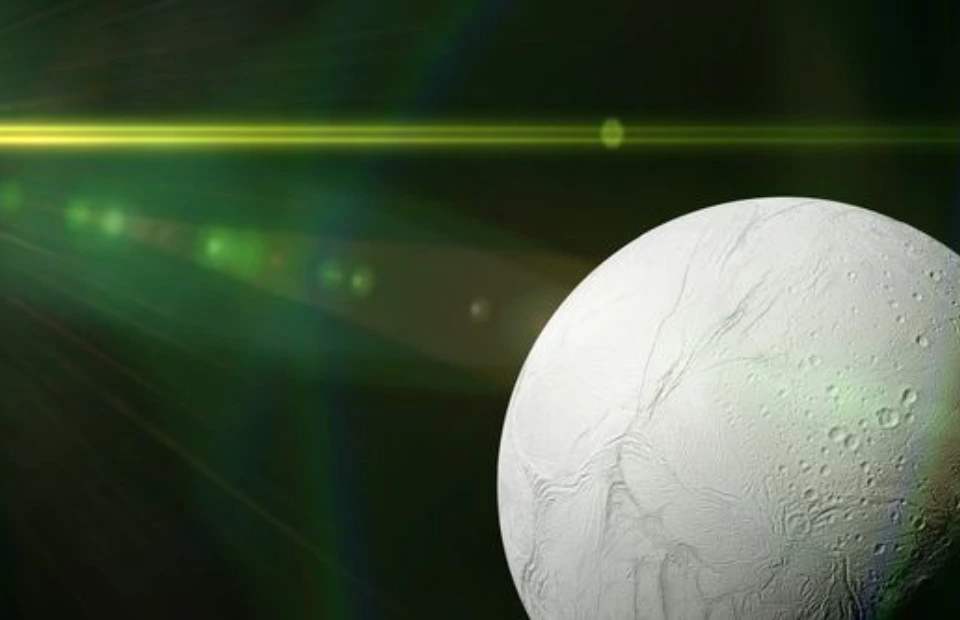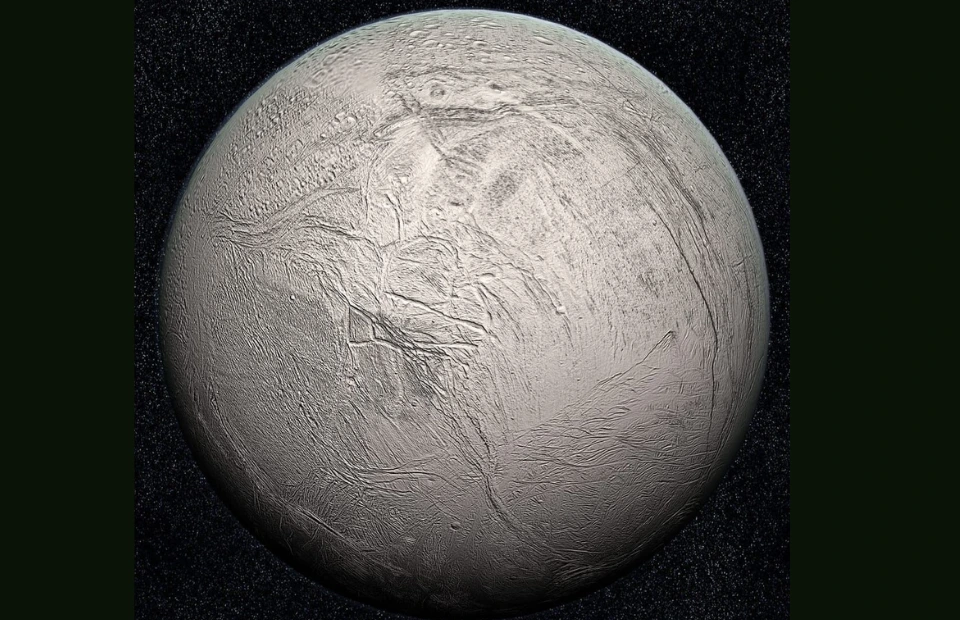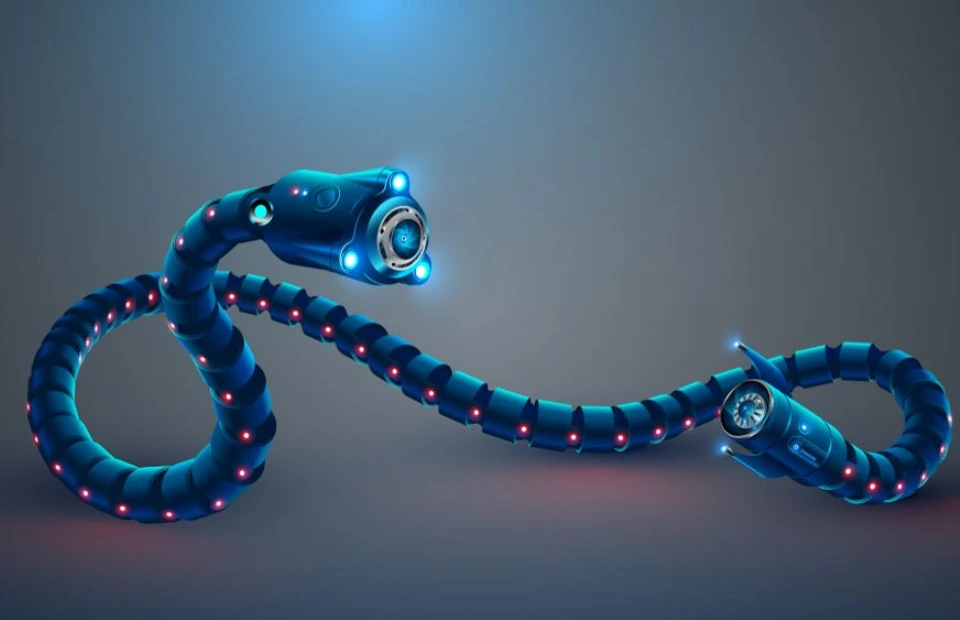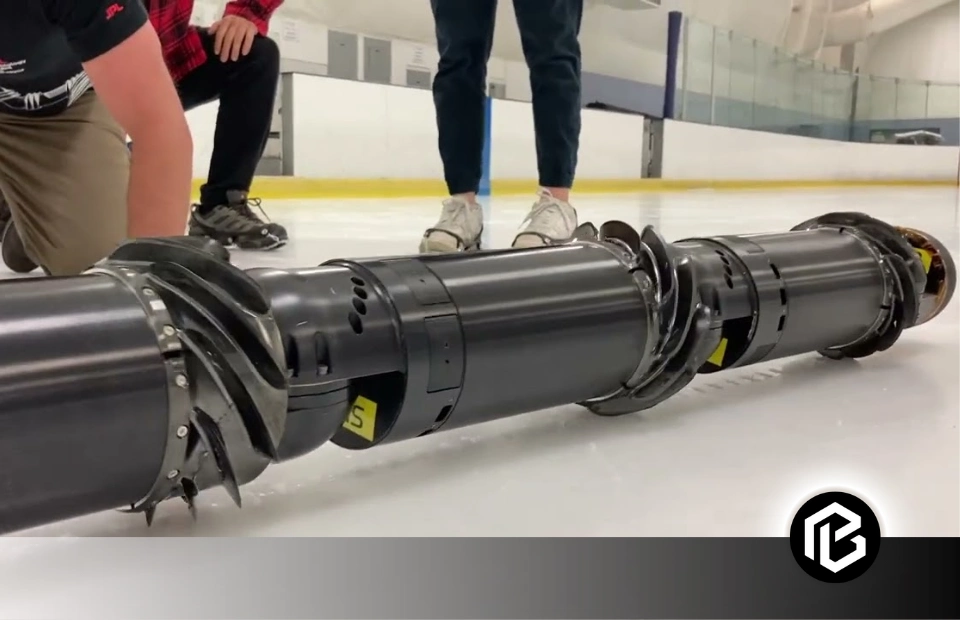You all must have seen snakes. But do you know NASA is creating artificial snakes? Is NASA will be sending snakes to space? Technically Yes! But why? Let’s clear all your confusion!
- History of Exobiology Extant Life Surveyor
- What is Enceladus?
- Six Essential Elements for the Survival of Life
- Types of Planets Where EELS Can Travel
- Lidar Technology
- Why NASA is Making EELS Robots
- Future of Discovering Life In Enceladus By EELS
- Challenges in Development of EELS
- Conclusion
- Frequently Asked Questions on Exobiology Extant Life Surveyor
History of Exobiology Extant Life Surveyor

The Exobiology Extant Life Surveyor (EELS) is a snake-like, self-propelled robot designed by NASA’s Jet Propulsion Laboratory. NASA has been working on a robotic snake since 2019. This snake is an exobiology extant life surveyor, 220 pounds heavy and 13 feet long. This will be sent to Saturn’s Ice Moon Enceladus, where it will discover Alien life. Ice Moon has a diameter of 505km: water, minerals, and organic materials, sources of energy, and all requirements of life. NASA wants to research places where giant robots cannot travel. This snake-like robot can crawl on any rugged surface without losing balance and stability.
What is Enceladus?

There can be chances of life outside of Earth, and the exciting thing, it’s within our solar system. Among Saturn’s frozen moons is Enceladus. Underneath that icy surface is a large ocean capable of supporting life.
Scientists announced that they had detected phosphorus on the moon, completing the list of the six essential elements needed to create life. Many people in the scientific community are now saying that we should send probes to Enceladus instead of Mars, and that’s not far away.
Six Essential Elements for the Survival of Life
First, we see the critical elements: life is impossible without them!

The essential elements which assure the chances of life are given as follows:
- Carbon
- Hydrogen
- Nitrogen
- Oxygen
- Sulfur
- Phosphorus
All these elements were discovered on Saturn’s moon, and scientists are enthusiastic to explore this moon and ensure life on it. So they decided to make an exobiology extant life surveyor to explore Saturn’s moon.
Types of Planets Where EELS Can Travel
Till now, all the rovers and robots sent to space can travel on plane surfaces, but EELS will be able to travel to impossible locations on planets. There are some planets which are:
- Not completely solid
- Have high temperatures
- Are completely Icey
Lidar Technology

Lidar stands for Light Detection and Ranging. It’s a remote sensing technology that uses high-power laser light to measure distances and create detailed three-dimensional maps of the surrounding environment. The Lidar System emits laser beams that return after hitting an object or some surface and measure the time it takes to produce. Then, this time in, formation is used to create detailed, precise, and high-resolution maps or models.
Lidar technology is beneficial in different fields and industries to navigate places where human presence is problematic. It is used to explore the depth of oceans and the medical area for monitoring deep carves.
Why NASA is Making EELS Robots
The Enceladus was discovered in 1789. It is a block of ice. Its surface is covered with ice. Scientists believe there is a sea of almost 10 km in this Enceladus. However, beneath this icy surface lies a vast ocean of liquid water, estimated to be about 10 km deep.

NASA believes that the EELS snake will be sent to discover life. This robot is designed so that it can be operated under any condition. The design of EELS helps it to work in different planet textures.
NASA always finds innovative ways and methods to create new technology to solve the common issues humans face. The surfaces of different planets are so weird and unbalanced that this is the first significant challenge for scientists to make space exploration robots that walk and go from one place to another on the planet. So, keeping this challenge in mind, NASA created the exobiology extant life surveyor, a snake-like robot that can easily crawl on any craggy surface in space.
Future of Discovering Life In Enceladus By EELS
Scientists believe that this surface ocean could have conditions suitable for life. This robotic snake can collect data about the Ocean’s environment, including its temperature, salinity, and chemical composition. If this robot detects signs of life in the Ocean, it would be a groundbreaking discovery, expanding our understanding of the potential of life beyond.
Challenges in Development of EELS
Exobiology extant life surveyor can only be created with challenges. The unique environment of Saturn’s Moon Enceladus requires a robot that can deal with unpredictable and extreme conditions. NASA considered these requirements a challenge and incorporated different technologies, including Lidar technology, in the EELS.
The exobiology of extant life surveyor innovation determines scientists’ potential to overcome traditional rovers and robots.
Conclusion
Enceladus is one of NASA’s priority objectives for the next decade, and the second they find aliens, I’ll be sure to let you know. EELS (exobiology extant life surveyor) is a remarkable move to explore space life. NASA is dedicated to revolutionizing the understanding of the cosmos. If you love science in this space, come for more informational content.
Frequently Asked Questions on Exobiology Extant Life Surveyor
What is exobiology, and why is it important?
Exobiology is the scientific study of the origin, evolution, and potential distribution of life in the universe. It is important because understanding the existence of life beyond Earth could provide insights into the fundamental questions about the origins of life and the potential for life elsewhere in the cosmos.
What are the primary objectives of the EELS mission?
The primary objectives of the EELS mission are to search for signs of extant (currently existing) life or conditions conducive to life on other planetary bodies, such as Mars, Europa, Enceladus, and Titan, through in situ measurements and sample analyses.
How does the EELS mission plan to search for signs of life beyond Earth?
The EELS mission plans to search for signs of life by deploying a suite of instruments and analytical techniques to characterize the chemical composition, mineralogy, and potential habitability of target locations, including subsurface environments, ice-covered oceans, and hydrothermal vents.
What technologies and instruments will be used in the EELS mission?
The EELS mission will utilize advanced technologies and instruments, including spectrometers, microscopes, cameras, drills, and sample collection devices, to perform in-depth analyses of the surface and subsurface environments of target bodies.
What are the anticipated outcomes and implications of the EELS mission?
The anticipated outcomes of the EELS mission include advancing our understanding of the potential for life beyond Earth, informing future space exploration strategies, and inspiring new questions and hypotheses about the nature and origins of life in the universe.





